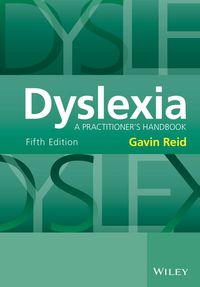



- 3. Process Costing (Weighted-Average Method) 8pts: The Peanut Butter Nutter Cookie Company uses the weighted-average method to account for costs of production in its process costing system. The Peanut Butter Nutter Cookie Co. manufactures its cookies in two separate departments: Mixing and Baking. The following information is for the Mixing Department (the first production department in its production process) for the month of October: Percent Complete with Respect to DM Percent Complete with Respect to Conversion Costs (DL+OH) 25% 100% Beginning work in process inventory Units started during October Units completed and transferred to the Baking Department during October Ending work in process inventory Units 39,140 581,860 572,500 48,500 85% 40% O O The accounting records for the Mixing Department indicate the following additional information: Costs in beginning WIP Inventory-Mixing Department totaled $64,433, broken down as follows: $28,207 in DM costs $36,226 in conversion costs Costs incurred during the month of October for the Mixing Department totaled $1,018,255, broken down as follows: $290,930 in DM costs $727,325 in conversion costs . O O PART A (2pts) - Calculations for the Mixing Department (use the weighted-Average Method): 1. 0.5pts: Calculate the equivalent units of production (EUP) for October for DM and for Conversion Costs. 2. 0.5pts: Calculate the cost per equivalent unit of production (Cost per EUP) for DM and for Conversion Costs for October (round cost per EUP to the nearest cent, i.e. to two decimal places). 3. 1pt (0.5pts each part a and b) Using the costs per equivalent unit calculated in PART A, 2.: a. Assign costs to the completed units transferred out of the Mixing Department to the Baking Department b. Assign costs to the units remaining in ending WIP Inventory-Mixing Department PART B (4pts; 0.5pts each entry) Journal Entries: Prepare journal entries for the month of October to record each of the below transactions (make sure to use proper journal entry formatting and include a brief description of each entry). 1. Raw materials purchases: Assume the firm purchased $321,975 worth of raw materials on account in October. 2. Direct materials used in production: Mixing Department: $290,930; Baking Department: $18,415. 3. Direct labor used in production (use the Factory Wages Payable account for the credit): Mixing Department: $170,480; Baking Department: $82,910. 4. Overhead costs applied: Mixing Department: $556,845; Baking Department: $270,812. 5. Transfer of costs of units transferred out from the Mixing Department to the Baking Department (use the amount calculated in PART A.3.a. above). 6. Transfer of costs of completed units transferred out from the Baking Department to Finished Goods Inventory. Assume the costs of these finished goods transferred out from the Baking Department to Finished Goods Inventory during October was $1,401,078. 7. Revenue of $2,660,145 from the sale of Peanut Butter Nutter Cookies on account. 8. Transfer of costs from Finished Goods Inventory to COGS. Assume the costs of the units sold transferred from Finished Goods to COGS was $1,399,859. - PART C (2pts; 0.5pts each balance) - Balance Sheet accounts, ending balances: Using all of the information given above, determine the October 31st ending balances of each the firm's inventory accounts listed below. You must show all of your work, either using formulas/calculations or T-accounts. 1) Raw Materials Inventory account (Assume the beginning balance of the Raw Materials inventory account as of October 1st was $35,814 and that indirect materials used during October was $9,447). 2) WIP Inventory Mixing (Assume the beginning balance of WIP-Mixing as of October 1st was $64,433 as given in the initial information above). 3) WIP Inventory Baking (Assume the beginning balance of WIP-Baking as of October 1st was $47,199). 4) Finished Goods Inventory (Assume the Finished Goods Inventory beginning balance as of October 1st was $52,764)










